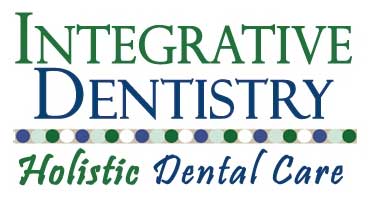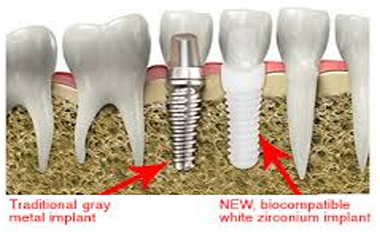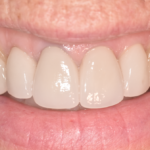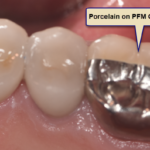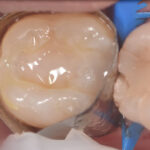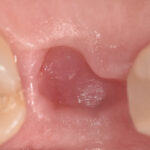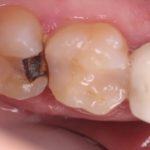Bio-Friendly Dental Materials
Introduction
Biological Dentistry is an approach to dentistry focusing on the biocompatibility of dental materials. In a toxic world it’s not advisable to add to our bodies’ toxic load through dentistry or create more stress to our immune system. Studies indicate that at some point at least 20% of dental patients develop sensitivity to one or more dental materials. These materials cause a reaction in the immune cells that protect our bodies from toxicity.
Dental materials have evolved, driven by the demands of health-conscious patients for safety, durability and biocompatibility. The understanding that dental health contributes a great deal to overall wellbeing has caused many individuals to seek out the care of holistic or biological dentists who practice with this mindset. This article surveys current bio-friendly dental materials, as well as the pitfalls of past choices such as amalgam and nickel. We will explore the ongoing debate surrounding fluoride, the importance of epinephrine-free anesthetics, concerns about BPA and other topics.
Throughout history, dental materials have undergone significant transformations. Early civilizations, such as the Egyptians and Romans, used materials like gold, ivory, and bone to restore teeth. During the Middle Ages, it was believed that decay was caused by small worms inside the tooth eating it away, a theory that led to the widespread practice of extracting teeth rather than treating them.
One of the most notorious dental materials in history is amalgam, a mixture of mercury, silver, tin, and copper. Introduced in the 1830’s, amalgam was celebrated for its durability and low cost. Because the mercury content in amalgams has raised serious concerns about health, there has been a huge decrease in their use over the last decade. This can partly be attributed to the presence of more appealing, tooth-colored alternatives that last more than 5-10 years.
The Dark Side of Amalgam
Amalgam fillings, often referred to as “silver fillings,” gained popularity due to their affordability and longevity. However, their mercury content became a subject of heated debate. Mercury, a potent neurotoxin, raised concerns about potential health risks, especially for those with multiple amalgam fillings. For some time. dental professionals and researchers have been exploring alternatives that are safer for both patients and the environment.
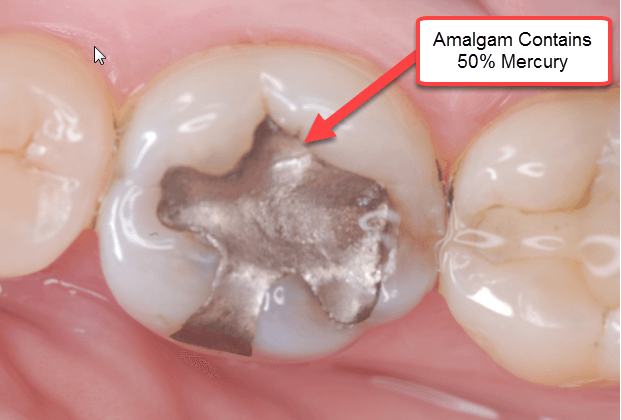
Nickel and Allergic Reactions
Nickel, another material that found its way into dental treatments, also posed health risks. Many people have nickel allergies, and when nickel-containing dental materials like crowns or orthodontic wires were used, allergic reactions were not uncommon. Just ask someone who can’t where earrings or rings if nickel allergy is a real thing. The discomfort and health implications associated with nickel allergies prompted the dental industry to seek alternatives.
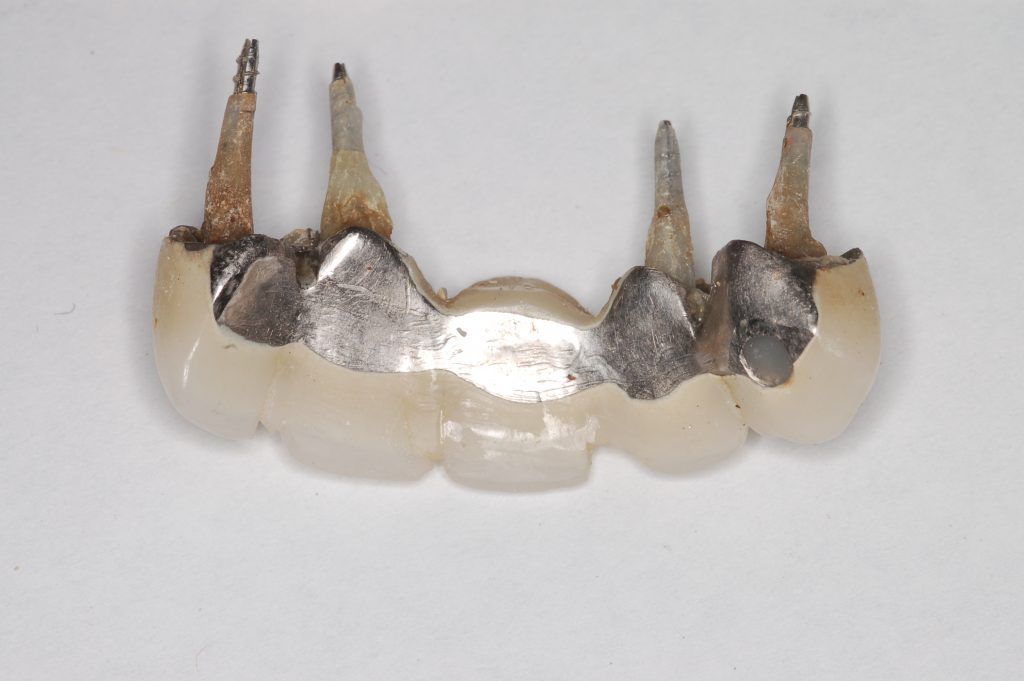
Fluoride Controversy
Fluoride, though not a dental material per se, is worth mentioning in the context of dental health. For decades, fluoride has been added to toothpaste and drinking water to strengthen tooth enamel and prevent cavities. And in the dental office, fluoride gel is used to ‘soak’ teeth of our children to try to coat the teeth and prevent cavities.
However, the fluoride used in the dental office is so concentrated that if it’s swallowed, that person will end up in the hospital with fluoride poisoning and will have to have their stomach pumped.

The debate over fluoride’s safety has simmered for years. Critics argue that excessive fluoride exposure can lead to dental fluorosis in the teeth and bone and potentially harm other bodily systems. It also leads to lower quality bone.
As a result, some individuals and communities have chosen fluoride-free dental products, sparking ongoing discussions about its true benefits and risks. If you use fluoride to help your teeth resist decay, make sure you don’t swallow or ingest it, because it is not good for bone health.
Anesthetics: Ensuring Safety and Comfort
When it comes to dental procedures, anesthesia plays a vital role in patient comfort. However, it’s crucial to consider individual reactivity and sensitivity to epinephrine, and generally to the potential toxicity of certain anesthetics. Dentists must carefully assess each patient’s medical history and question them about past experiences with local anesthetics.
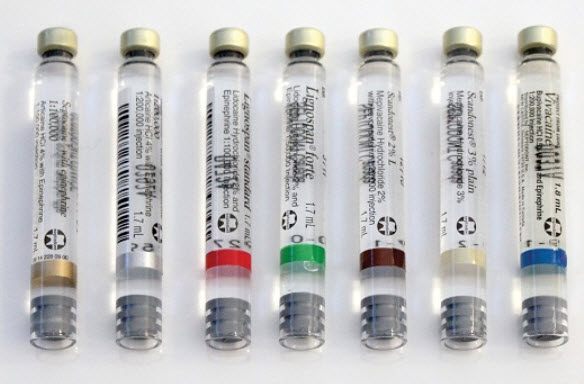
Novacaine, which has been a recognizable brand name for anesthetics for many years, was replaced by Lidocaine because it is less likely to cause a reaction. Novocaine has been in wide disuse since the eighties. However, side effects of Lidocaine may include:
- Nervousness,
- lightheadedness,
- apprehension,
- euphoria,
- confusion,
- dizziness,
- drowsiness,
- ringing in the ears
One key advancement in this area is the use of epinephrine (EPI) as a vasoconstrictor in local anesthetics. EPI helps control bleeding, extend the duration of anesthesia so that numbing can last longer. A newer anesthetic originally from Europe, Septocaine is very effective and less toxic than Lidocaine. However, occasionally, patients have a sensitivity to the epinephrine in Septocaine. The reaction caused by epinephrine can be experienced as the heartbeat rising significantly. This can be very concerning and even scary to patients, as it feels like a panic attack or even a heart attack. This happens because epinephrine is essentially adrenaline, the flight or fight hormone.
If you have ever had an epinephrine reaction, make sure your dentist is aware of it, as dentists should have epinephrine free options such as Citanest to ensure the safety and effectiveness of anesthesia during dental procedures. Citanest is an alternative to Septocaine because it does not have any epinephrine in it. Both of these anesthetics have proven to be very effective for patient comfort and care.
BPA Concerns in Dental Materials
Bisphenol A (BPA), a synthetic compound found in various plastics, has raised concerns in the holistic dental world. BPA has been used in some dental materials, such as composite resins and dental sealants. While these materials have become popular alternatives to amalgam and other metals, BPA’s potential health risks should be taken into account when removing these composites and orthodontic bonding.
Sometimes patients have reactions from being exposed to the monomers and chemicals released while drilling composites fillings out. This was because their sensitive immune systems and their was no filtration in place to whisk away all the monomer fumes and resin dust released during the dental work. It is not advisable to breathe the aerosol monomers and chemicals as they will then have access to your bloodstream.
Research suggests that BPA exposure may disrupt hormonal balance and has been associated with various health issues, including reproductive and developmental problems. Consequently, dental professionals have been exploring BPA-free alternatives to ensure patient safety and address concerns regarding long-term exposure.
At Integrative Dentistry we use BPA free and fluoride free composite filling materials.
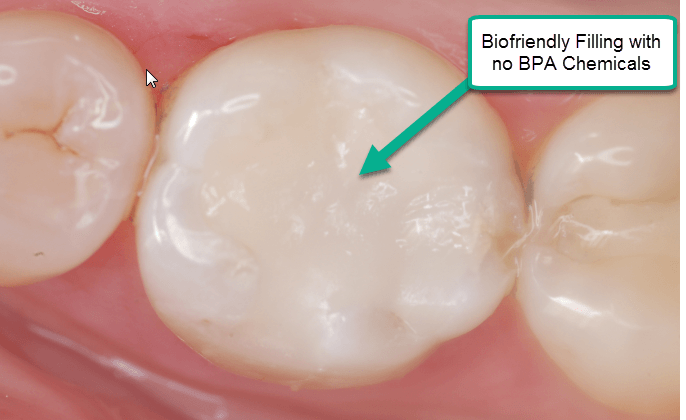
The Rise of Bio-Friendly Dental Materials
To summarize, dental materials have witnessed a transformation towards ‘bio-friendliness’ or biocompatibility over the last 10-20 years. Dentists and researchers have been exploring innovative materials that prioritize patient health and well-being. Some of the notable advancements include:
- Resin-Based Composites: Modern resin-based composites have evolved to become both durable and biocompatible. They offer a natural appearance and can be customized to match tooth color, making them an attractive option for dental restorations.
- Ceramic Restorations: Dental porcelains, such as zirconia and lithium disilicate (Emax), have gained popularity for their excellent biocompatibility and natural appearance. These materials are strong, long-lasting, and well-tolerated by the body.
- Metal-Free Orthodontics: The use of nickel-free and titanium-based orthodontic materials has become standard practice to reduce the risk of allergic reactions in orthodontic patients.
- BPA-Free Sealants: Dental sealants that are free of BPA offer protection against cavities without the potential health risks associated with this synthetic compound.
- Zirconia implants are extremely bio-friendly to the body and produce practically no inflammation in the bone and gums around them when placed. When compared to titanium implants the difference in inflammation is significant. At Integrative Dentistry we use only bio-friendly zirconia implants.
Conclusion
The world of dental materials has come a long way from the days of primitive treatments and potentially hazardous materials like amalgam and nickel. While fluoride and EPI continue to play crucial roles in dental care, concerns surrounding their use are prompting ongoing research and discussions.
In the quest for healthier smiles, dental professionals are increasingly turning to ‘bio-friendly’, biocompatible materials, such as resin-based composites and ceramic restorations. These materials not only provide aesthetic benefits but also prioritize patient safety and well-being.
As dental science continues to evolve, it is essential for both patients and practitioners to stay informed about the latest developments and make informed choices when it comes to dental materials. One of the latest developments, improvements in ceramic/zirconia dental implants, is a further topic that merits review. More about this in a future article.
The journey towards healthier smiles is a testament to the ever-advancing field of dentistry, where science and patient welfare go hand in hand.

Carey O’Rielly DDS has been a practicing dentist for 35 years. He went to USC Dental School and Duke University for his undergraduate degree. He grew up in Laguna Beach and now lives in La Costa with his wife Victoria, who runs his office.
He began his career by owning and operating a network of six offices in the San Francisco Bay Area. Presently he owns a private holistic practice in North County San Diego’s Encinitas.
Dr. O started looking for solutions to his health challenges that resulted from the stress and environmental toxicity that built up over a ten year period running his dental network. He has dedicated himself to learning about oral systemic problems and how dentistry can affect your health. He has applied what he has learned over the last twenty years to ensure he, his staff and his patients are protected from the chemicals and toxic materials found in most dental offices. He has produced an environmentally friendly office that is also peaceful and calm.
He is an expert on dental materials having looked at hundreds of biocompatibility lab tests over the years. He has identified the most bio-friendly materials to use in his practice and which dental materials can be used to replace metal fillings and crowns, including BPA free and fluoride free ‘white’ fillings. He also uses metal-free Zirconia or ceramic implants and PRF (platelet-rich fibrin) grafting materials which come from the patient’s own blood.
Dr. O’Rielly teaches C.E. courses on the systemic effects of gum disease. He is an expert in using phase contrast microscopy for analyzing dental infections, where he shows patients what kind of microbes, i.e. bacteria, amoeba, and yeasts like candida are populating the mouth and affecting the body as a whole.
He has an educational blog and is writing a book on dental health called ‘Hidden Dental Infections: Healing Root Canals and Infected Teeth with the Erbium Laser’ where he discusses dental nutrition, toxic dental materials and the effects of old root canals on inflammation and overall health.
